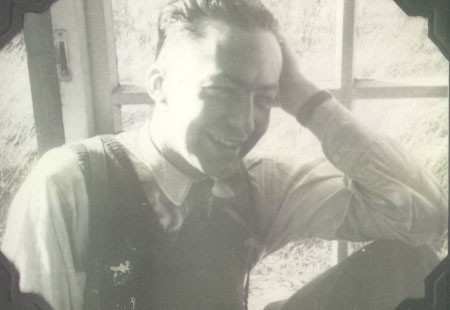re-membered…
11 November 2019. I want to re-member (literally, put back together) or bring back into my memory and honour two war veterans, my grandfather, Private Lorance Thomas Morrow (World War I), and my father, Flight Lieutenant Lawrence (Larry) Donald Morrow (World War II). My desire and choice is to relate, narratively and with images for my grandfather, pictorially for my father, what few, scant stories exist about each man regarding his/their service to Canada and, combined with all veterans’ sacrifices, the resultant Canadian freedoms we are privileged to enjoy today.
Lorance was born on the 25th of June 1893 in Charlotteville, Ontario. He died 9 April 1917 at 23 years of age; he enlisted on 26 January 1916 in Simcoe, Ontario. Private Morrow’s service number was 796604; his Army unit was the Canadian Infantry (Quebec Regiment) Division “A” Company, 14th Battalion
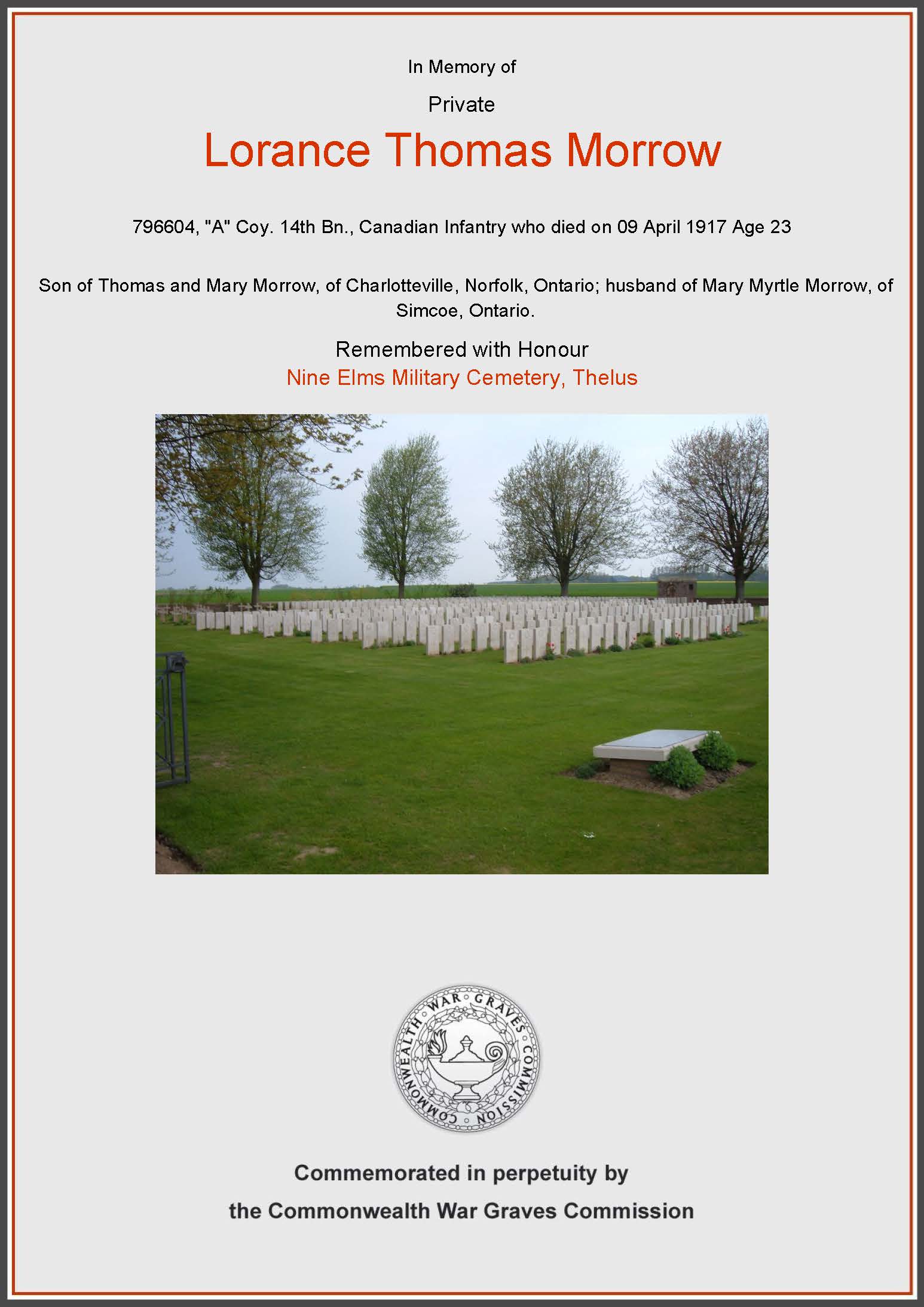
The Commonwealth War Graves Commission memorial is accurate in the details of his service record, his regiment, and his burial site. From the recollections of my Uncle Roy (my father’s brother and only sibling), Lorance was fighting along enemy lines in France and was injured in his leg or foot. Apparently, he was last observed trying to make his own way back to the hospital for medical care and was never seen alive again. Roy believed from whatever source he had that his dad was killed by shrapnel while on route to getting medical attention; my grandfather’s Attestation papers (documents prepared for and with a military service volunteer on enlistment and added to during years of service) suggest he was killed “by enemy Machine Gun fire.” According to one soldier from Port Dover, near Simcoe, Cpl Sam Morris, Lorne Morrow and Cpl Morris “went over the top at Vimy” where Lorne “met his death in this action [and]…lost a leg in serving his country” [from the Simcoe Reformer newspaper 25 October 1917]. “Over the top” meant soldiers climbing up out of their trenches and over or through the parapets or wooden blockade atop the trenches to attack the enemy. The same local newspaper referred to Lorance always as, “Lorne,” very likely how he was known at home, informally. The full set of Attestation Papers is in the green link above; below is the first page of those papers:
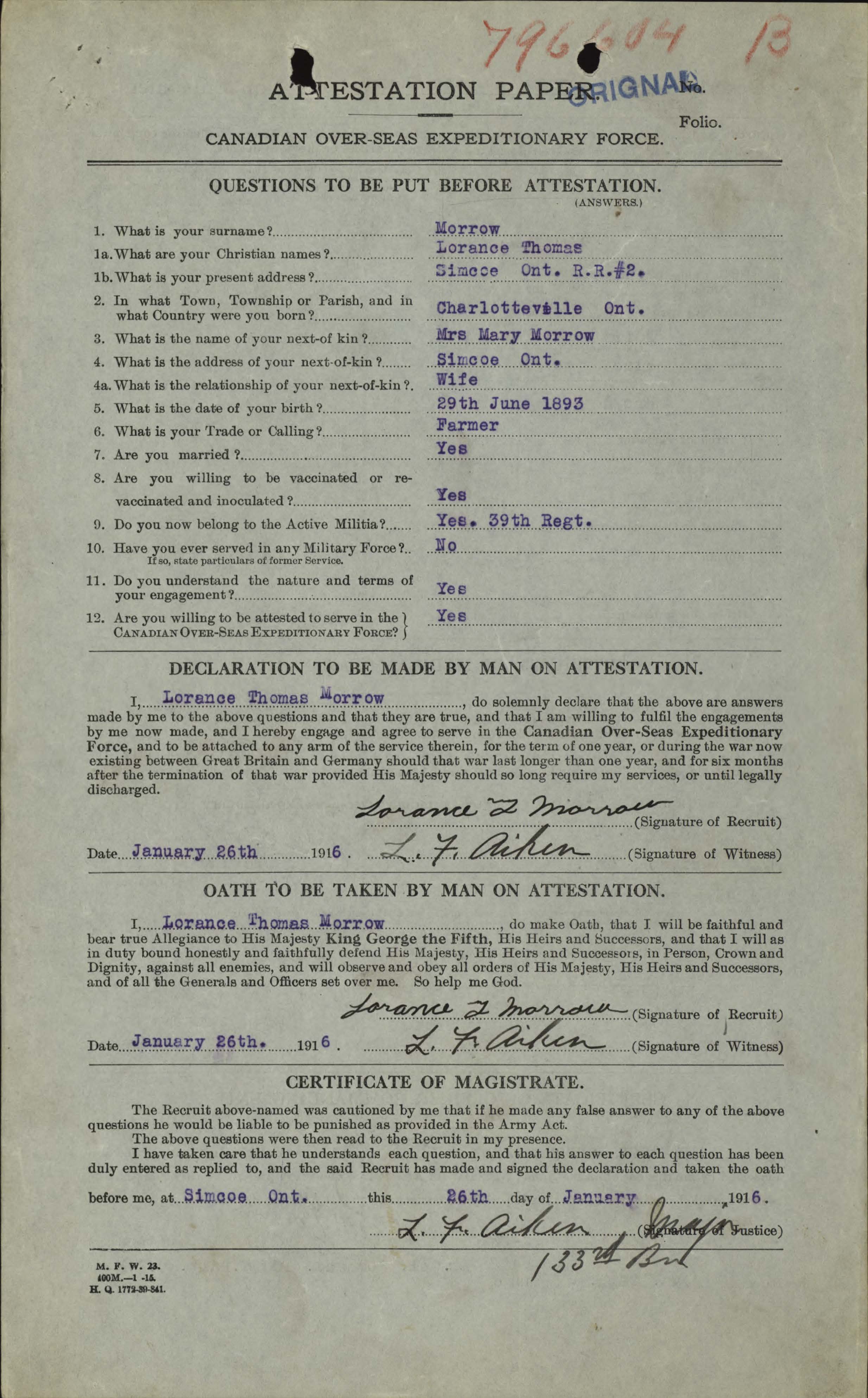
The terrain Lorance would have crossed, whether on his way back to medical aid or coming out of the trenches was cratered from bomb explosions; bodies literally would have been blown apart. Lorne’s commanding officer, Col. Arthur C. Pratt wrote to Mrs Lorne Morrow on 30 September 1917 and in his condolence letter to her, noted that Lorne was killed instantly. Apparently, said Col. Pratt, one Harry Masecar of Simcoe was near Lorne when he “fell,” picked him up and helped bury him [Pratt’s letter was reproduced in the Simcoe Reformer on 25 October 1917]. Lorance died on the first day the Battle of Vimy Ridge began; the cemetery – Nine Elms Military Cemetery – is located at Pas de Calais, very near the village of Thelus, not far from where the Vimy battles occurred.
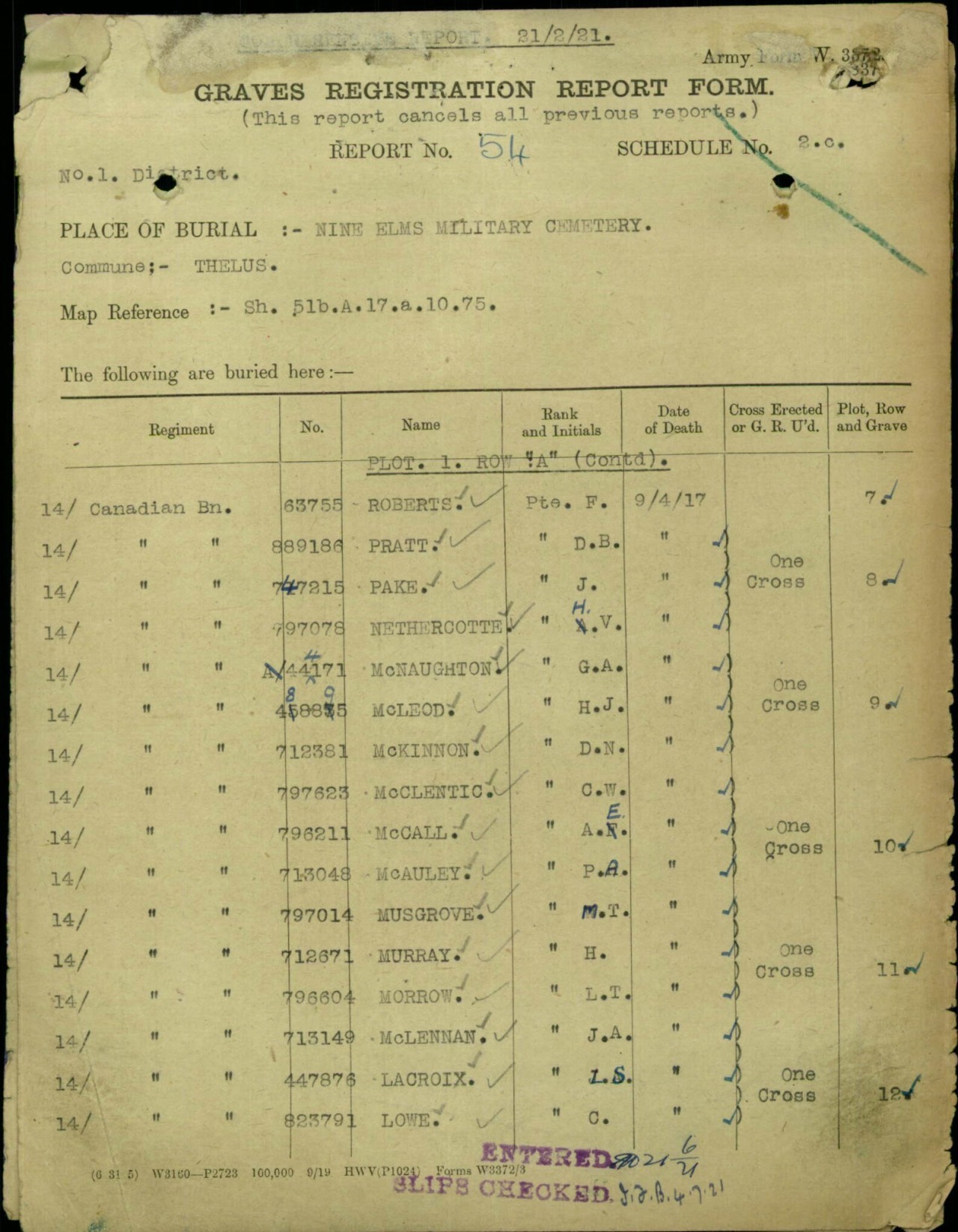
The graves’ registration report above verifies L.T. Morrow’s interment. We believe that soldiers are buried two-deep on each gravesite – the “One Cross” for him and Pte or Private H. Murray along with the practice of burials in this fashion would suggest that fact is true, as does the shared headstone with Private Hector Murray depicted below.
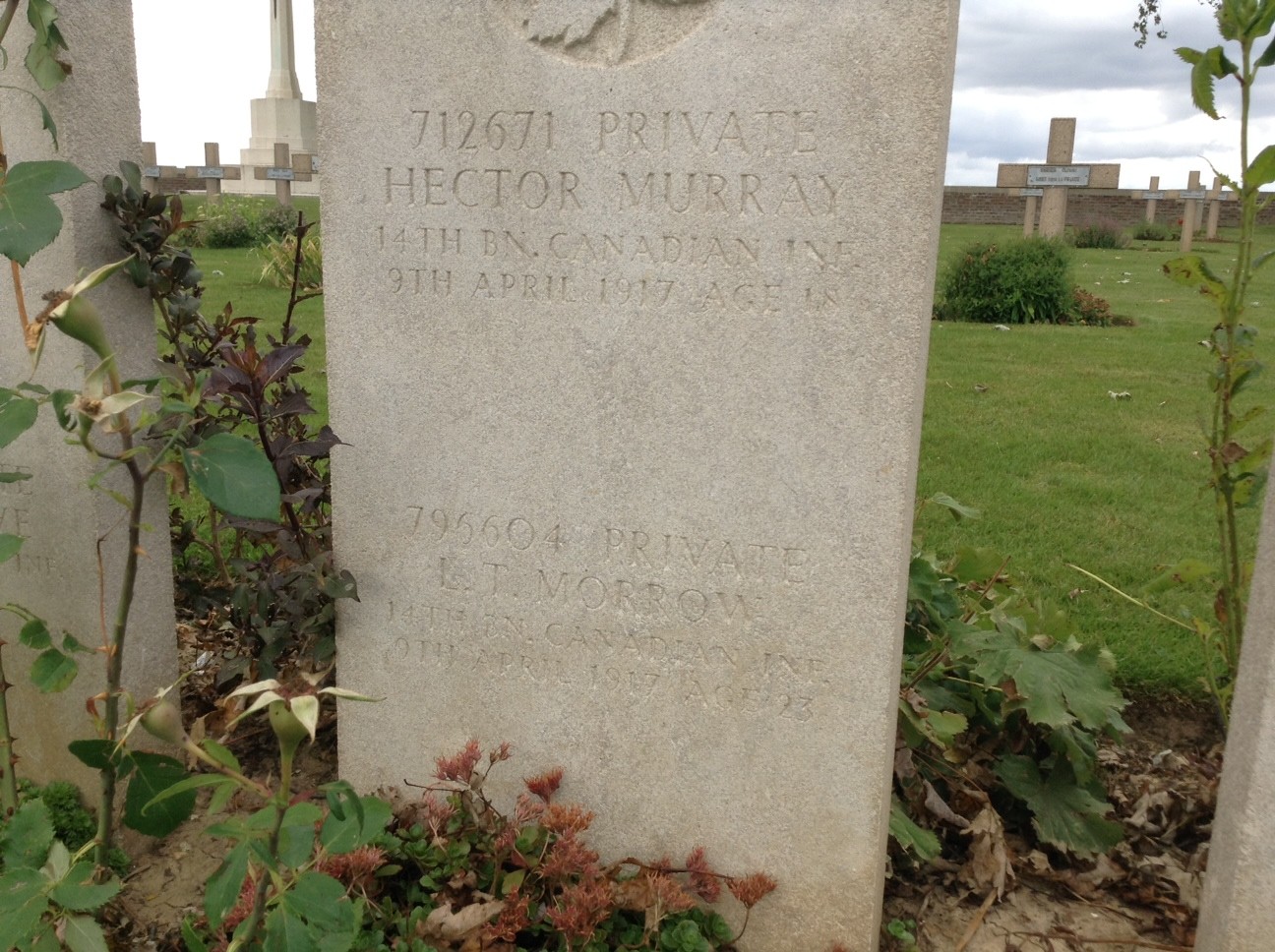
The graveyard itself is one of those tended by French school children; each grave has a flowering bush planted before the stone. A lot of Canadians are buried here, even some from the Simcoe area. Similar graveyards dot the landscape near my grandfather’s grave.
Although there are no poppies in the burial site image below, I can’t help but hear some of the lines from John McRae’s renowned poem – repeated and chanted so often, by so many at this time of year – as I look at this mirroring of Flanders’ fields, Lorance Thomas Morrow’s ‘field,’ in the two images below, “…between the crosses row on row…”
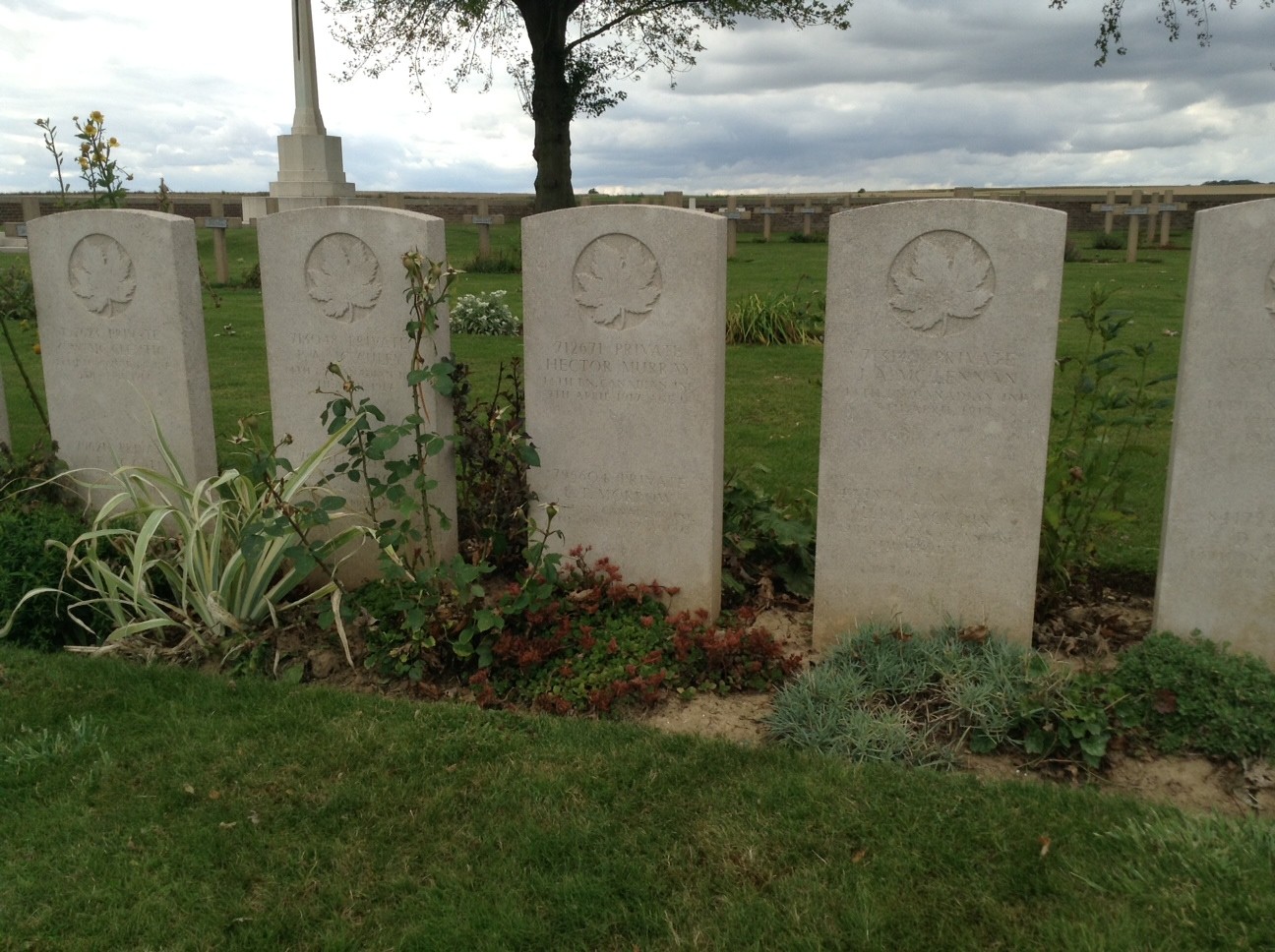
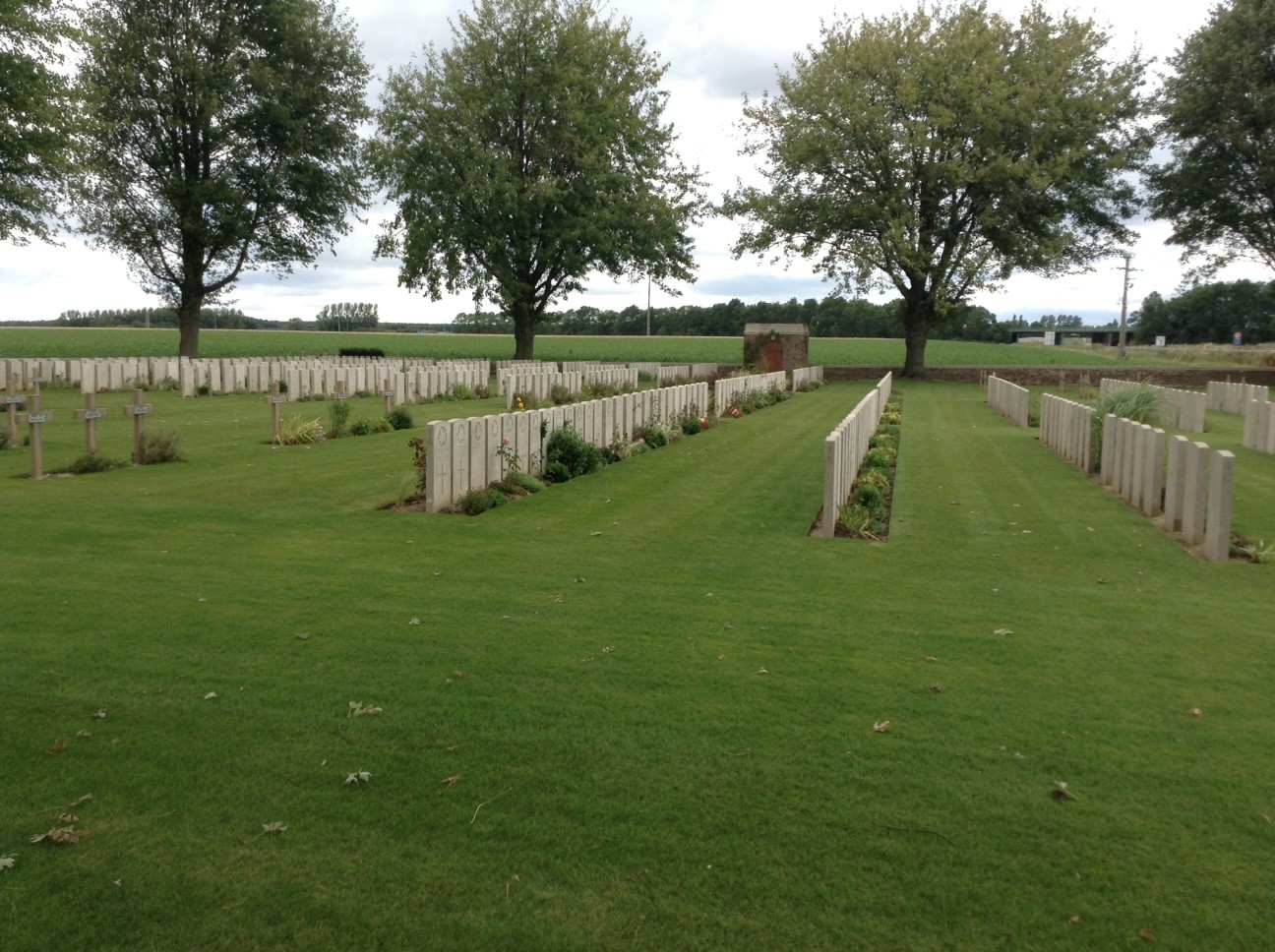
And I think too of Maya Angelou’s wondrously compelling poem, A Brave and Startling Truth…one verse in particular:
When we come to it
When the curtain falls on the minstrel show of hate
And faces sooted with scorn are scrubbed clean
When battlefields and coliseum
No longer rake our unique and particular sons and daughters
Up with the bruised and bloody grass
To lie in identical plots in foreign soil
I cherish this photograph below of my grandfather.
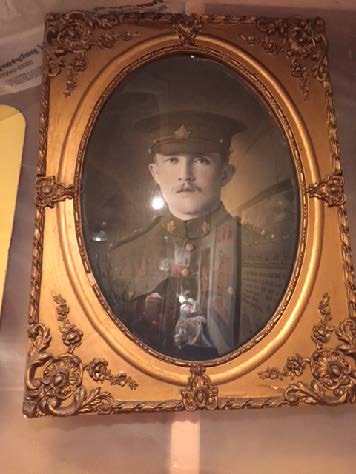
The portrait sits in a 24 X 18 inches’ ornately gilded frame and it hangs in my tool room where I see it daily as I enter the room to do pulley exercises for a long ago torn rotator cuff injury. Often do I compare the triviality of my injury vis a vis my grandfather’s fatal injury and the life-sacrifice he made. Sacrifice means to make sacred, unquestionably personified in my grandfather’s war-death. Was the photograph taken on his enlistment? What sadness do I now attribute to his eyes? I observe symmetry of his nose, his left ear askew, visage delicately mustachioed but otherwise smooth-shaven, small lips almost pursed, soldier-proud, smartly uniformed…his life, unbeknownst to him, mostly already behind his pose-date. [To me, of all family members, my cousin Rick/Richard, Roy’s oldest son, looks most like Lorance; however, Rick’s brother and Roy’s fourth child was named Lorne, after his grandfather.] According to my grandfather’s Attestation Papers, his eyes were blue, hair, brown, height 5 feet, 8 inches, ”chest expansion 38 inches,” of fair complexion; Lorance was a self-professed Methodist in religion and farmer, by trade. The following information about Lorne’s memorial appeared in the Simcoe Reformer newspapers of 17 and 24 May 1917:
ATHERTON
A memorial service for the late Pte. Lawrence [sic] Morrow, killed in the Vimy action, was held in Salem Methodist Church last Sunday [20 May 1917]. He leaves a widow and two small children — one born since he went overseas.
A crowd of people that greatly overtaxed the capacity of Salem Church, assembled there on Sunday afternoon to be in attendance at the memorial service to the late Private Thomas Lorance [sic, his first name was Lorance] Morrow, who died of wounds received at Vimy Ridge.
The church pews aisles and vestibule were filled, dozens of women stood about in the graveyard adjoining, while scores of cars filled with people stood along the road while the service lasted.
The members of the Orange Lodge of Delhi, of which diseased [sic, I’m quite certain the Reformer meant deceased] had been a member, were present and the service was in charge of Rev. N. Argyle Hulburt, who preached an eloquent and impressive sermon.
Atherton was/is virtually a hamlet located along Highway # 3, not far from the town of Delhi. Salem Methodist (later United) Church was a small, rural church. From my years on the farm, I remember going to Salem with my grandparents (my grandmother remarried) when services were held mid-afternoon, the later start was for reasons that escape me now. Though small, the community in which Lorne lived must have been tight-knit – a community in the truest meaning of the term – if judged by the description of the church being “overtaxed to capacity,” flowing in fact out into the cemetery and the adjacent road, and by this personal description of Lorne from the 10 May 1917 edition of the Simcoe Reformer, “Pte Thomas Lawrence [sic] Morrow. Well known young Charlotteville farmer. Died of wounds received in the Vimy Ridge action a month ago.” The church is long-gone (1904-1964) but is commemorated in this stone:
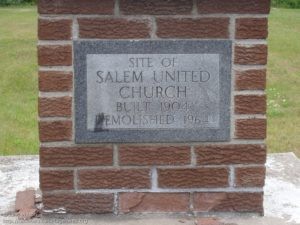
The Salem church cemetery remains and its size reflects the active community then and now. I can remember as a young boy, first introduced to gas-powered lawnmowers, cutting what seemed like an immense exspanse of grass at the cemetery with my step-grandfather, Bruce Card, and my great Uncle, Louis Dawson, the latter was Gram’s brother:
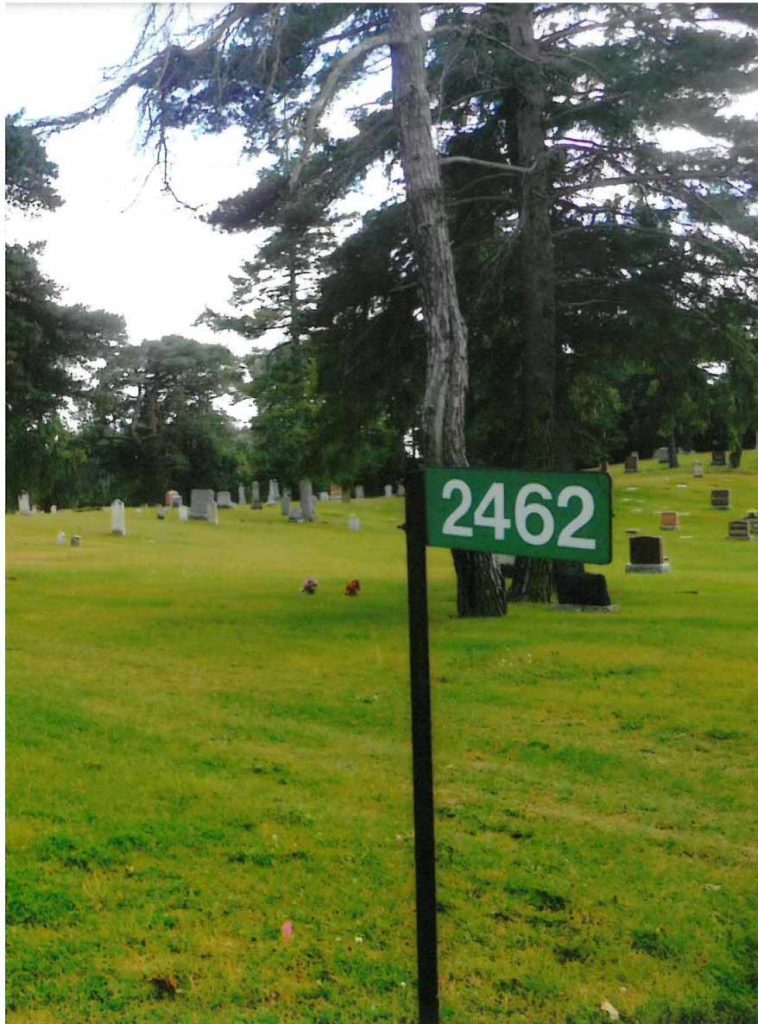
In attending Salem Sunday services and mowing its lawn in the late 1950s, I was completely unaware of the memorial held to honour my grandfather just 40 years earlier.
Lorne enlisted voluntarily in January 1916 – conscription wasn’t enacted by the Canadian government until mid-May 1917, more than a month after Lorance’s death – and his Unit sailed to England on 30 October 1916. The fact that Lorne belonged to the Orange lodge in Delhi would suggest two central convictions or beliefs held by my grandfather, ones foundational to the tenets of the Orange lodge – he was firmly Mehodist (now Protestant) in religious faith and he would have been patriotic within his Orange Lodge imperial and nationalistic loyalties or perspectives on seeing his duties as a Canadian. Very likely then, enlisting for war was an unquestioned civic, patriotic duty for Lorne. My father was born on 10 January 1917. Doing the reproductive math would suggest my grandmother was just over 6 months’ pregnant with my dad when my grandfather left for the war effort. Lorance would have known his first son, Roy. He never met his second son, my father, and my dad grew up with his uncles (Gram’s brothers, Leo, Louis, and Les Dawson) as father-figures but no father. My grandmother eventually remarried – Bruce Card [see, Woodcutter…the farm re “Stinky” as we called Bruce fondly] – but not for many years. And what of Mary Myrtle Morrow (née Dawson), left with a newborn son and his brother, Roy…
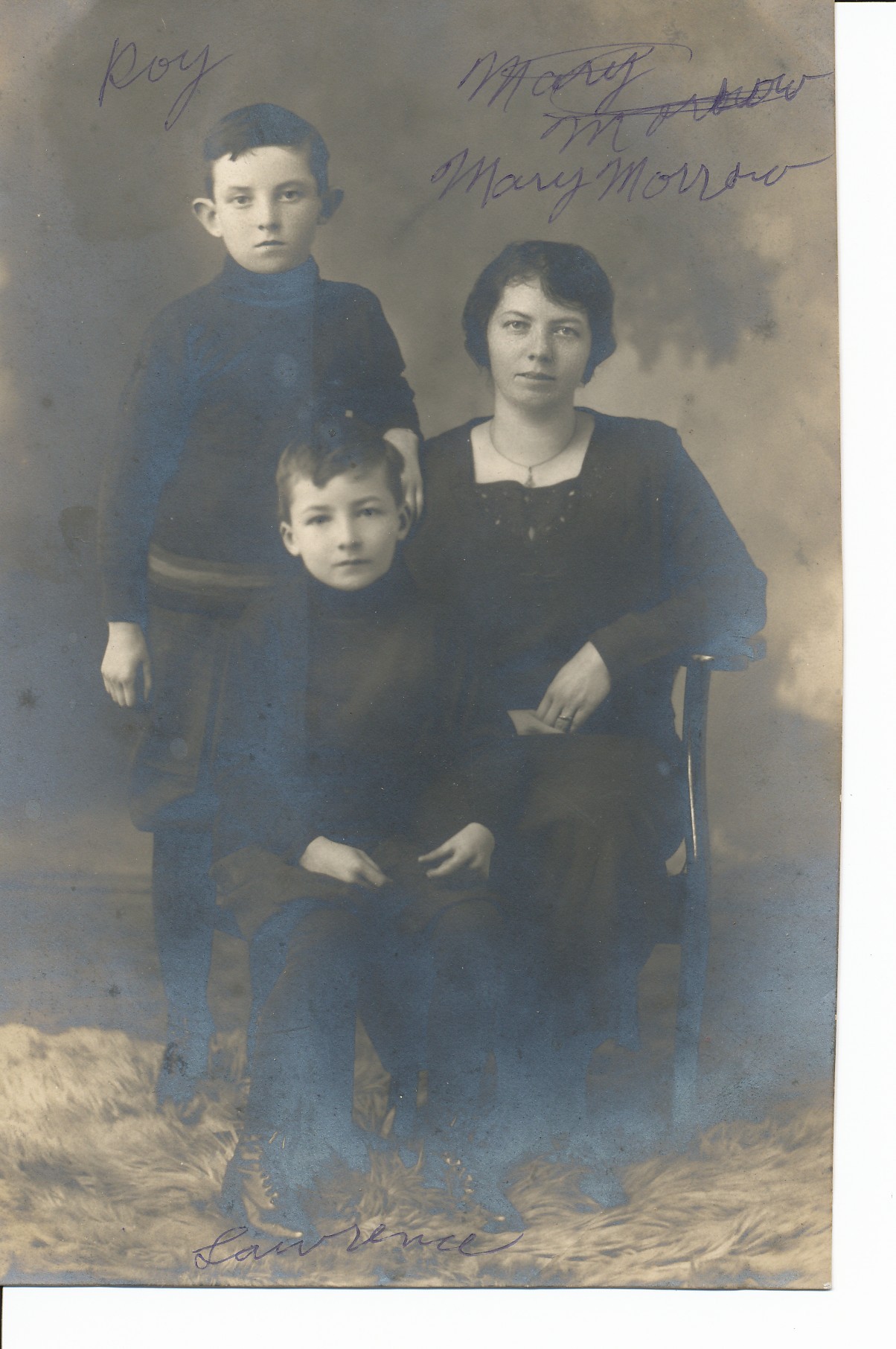
When and how did she learn of her husband’s death? It turns out that many letters were written by commanding officers to her informing her of her “good husband’s” death; those letters are reproduced in the Norfolk Genealogy site discussed below. I note in the picture above that she is wearing what would appear to be her wedding ring. What sacrifices and adjustments did she have to make to raise two children on her own? My father often showed me the house where he believed he was born and where he, his mother, and his brother lived during dad’s earliest years, a tall, narrow structure some 4 miles west of Simcoe. About a week after I posted the first version of this blog, I happened across some fascinating information about my grandfather on the Norfolk Genealogy site [click on Morrow, Lorance T. to see the information, or, reproduced at this link]. I have integrated that genealogical information where relevant in the blog.
The only pension records I could find verify a monthly federal pension ‘bonus’ of a one-time $100 amount and about $20.00 for some 18 months payable to her following Lorance’s death. I knew my grandmother very well and have described my relationship with her in an other blog. However, if she ever spoke about her first husband, I have no recollection of it. Who was he? What did he relish about life? What were his life plans, his aspirations, his hopes, his love, his dreams? Did he know and feel, as a “well known young Charlotteville farmer,” what W.P. Kinsella said, “Once you’ve been touched by the land, the wind never blows so cold again, because your love files the edges off it” [Shoeless Joe novel]. As my grandfather attested to in his enlistment-paper signing at 22 years of age, he had to know what serving his country might mean. His love for country and his family must have filed the edges off of his potential demise.
Lorance Thomas Morrow and his county’s veterans are re-membered poignantly by the 1925-erected Norfolk War Memorial Carillon Tower, depicted below:
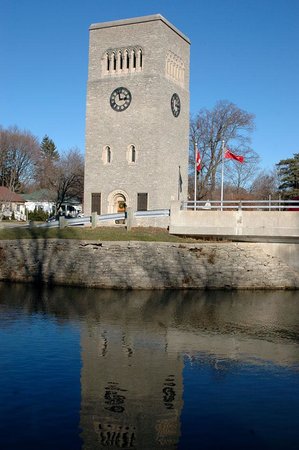
Carillon performances are held regularly May through December, Remembrance Day included, with the playing of the tower bells in Simcoe’s down town park system along the Lynn River. This was the second carillon installed in Canada. Built to honour Norfolk’s War heroes, it was dedicated on June 17th, 1925. The Norman architectural style stone tower is 60 feet high and contains 23 bells. The heaviest of the bells is 1,568 pounds, the smallest is 60 pounds. The total bells’ weight is 8,561 pounds, more than 4 tons. 22 volunteers play the bells nine months of the year on a regular basis. This video clip is a Carillon ‘Little Drummer Boy’ 2016 performance. On the street-face of the tower, the north plaque bears the names of all the 217 men of Norfolk County – including that of Pte. Lorance T. Morrow (in last name alpha order) – who gave their lives in World War I. The plaque is reproduced below:
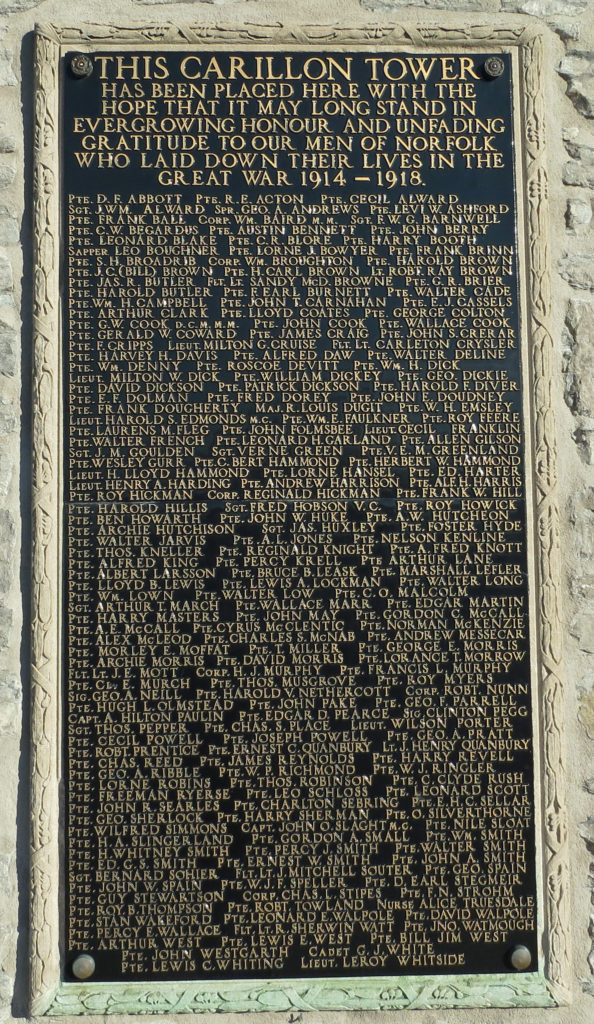
And so, with a kind of contrite spirit and, at the same time, with some manner of reverential humility, I tumble home gently each November 11th and give thanks for the life sacrificed by Lorance (Lorne) Thomas Morrow.
My father was Lawrence (Larry) Donald Morrow, born 10 January 1917, died 29 March 1993, 2nd son of Lorance Thomas Morrow and Mary Myrtle Dawson-Morrow. Of intrigue now is my father’s first name. Born just under 3 months before his father’s death, my grandmother named him Lawrence, the name spelled differently but sounding the same as Lorance – my dad then, a living homophonic tribute to his father. Did my grandmother struggle in calling out ‘Lawrence’ as my father grew up, and/or, did she sense its honorific, gentle, and respectful paean to her husband? I have written a variety of blogs about different aspects of my father’s life and his impact on me – see, for example, Spitfire. His wife, my mother, Marion Grant McCullough-Morrow died of a major illness in 1957 at 38 years of age. I don’t know much about the details of my dad’s enlistment. Where my grandfather was Army, my father joined the Royal Canadian Air Force and became a pilot, rising to the rank of Flight Lieutenant. He never ever told me about his service in the Second World War other than to say he could not speak of it. I cannot begin to imagine the horrors both he and my grandfather saw and experienced in the two “great” wars. What I do know about my father is that the Air Force was home to him; flying and teaching flying were his occupational and probably personal passions. My father was a man in uniform and a uniform man, unchanging in his form or character, as I remember him and his behaviour. Unlike my descriptive re-membrance of my grandfather, I choose to bring my awareness to/about my dad in images, pictures – well, most of them – without captions or comments. I tumble home this Remembrance Day and all days to the memory of my father and honour his service to Canada during World War II, with profound gratitude.
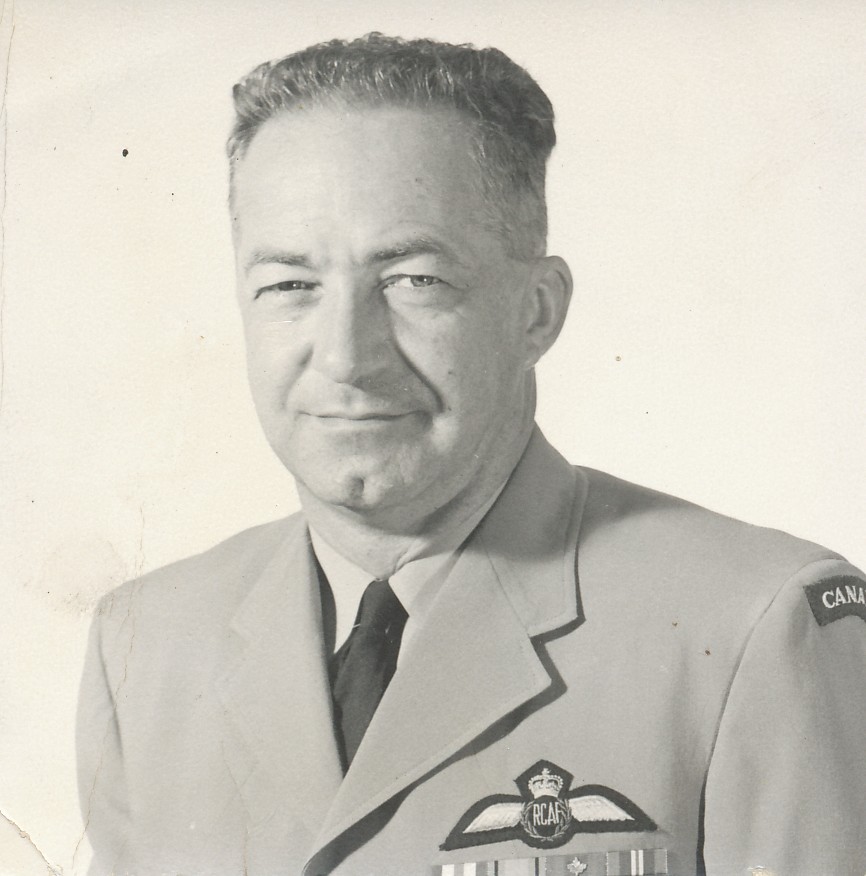
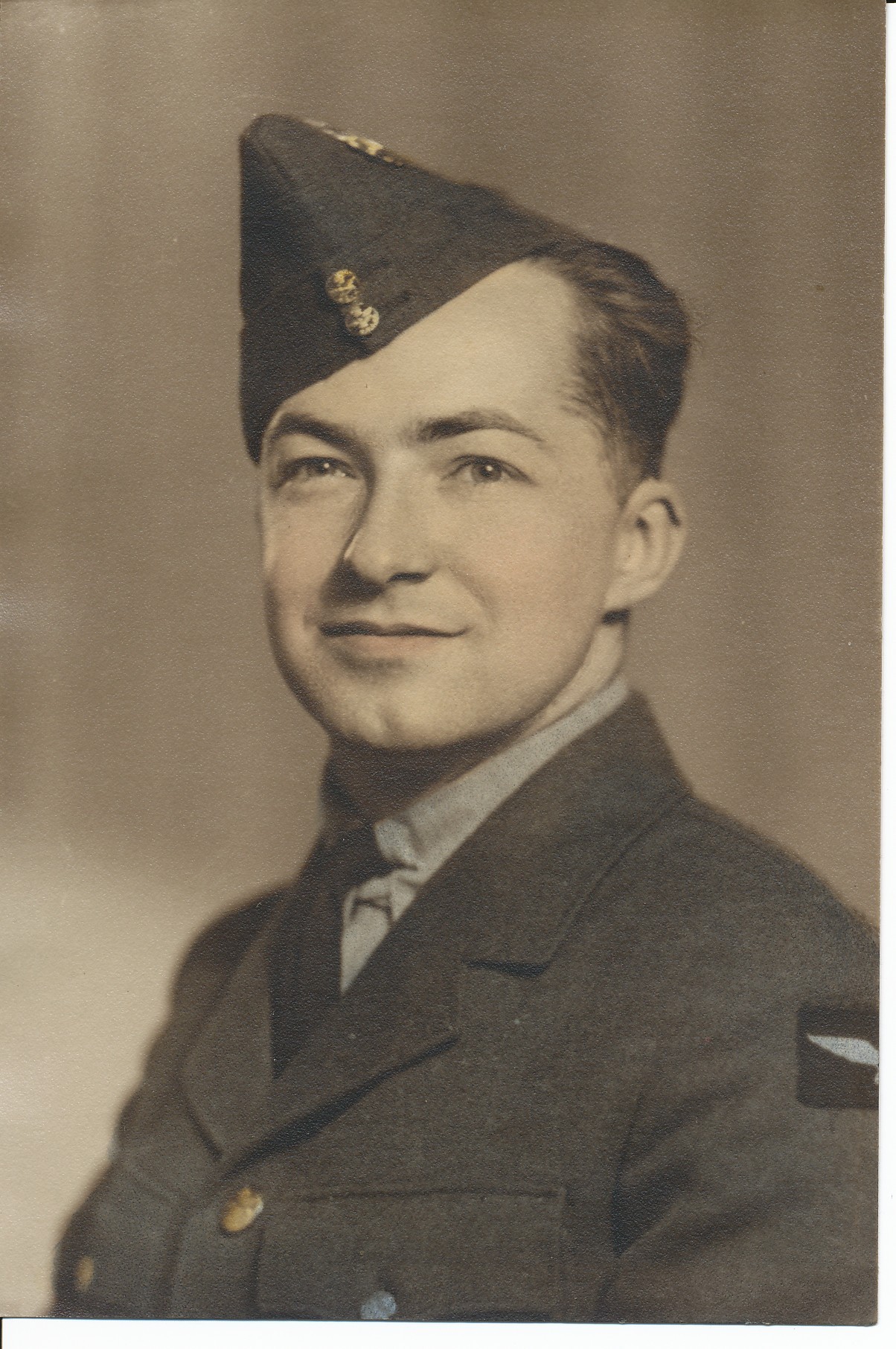
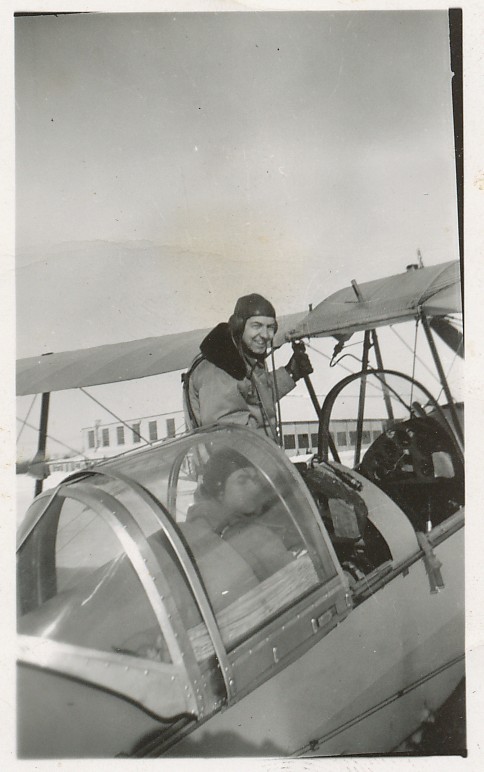
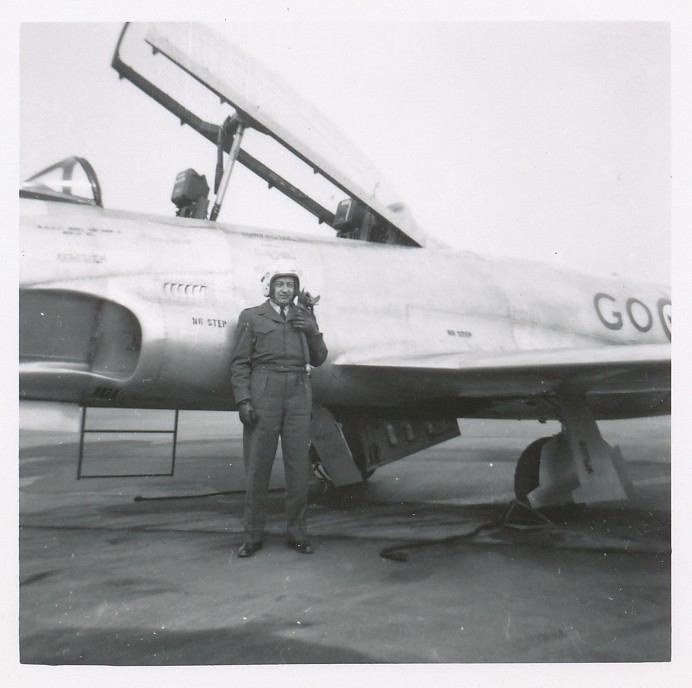
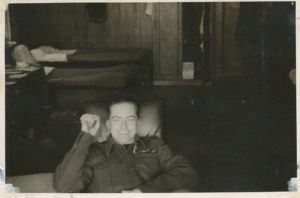
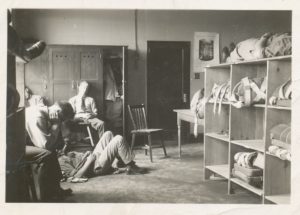
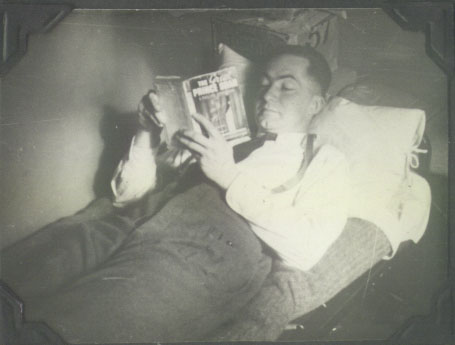
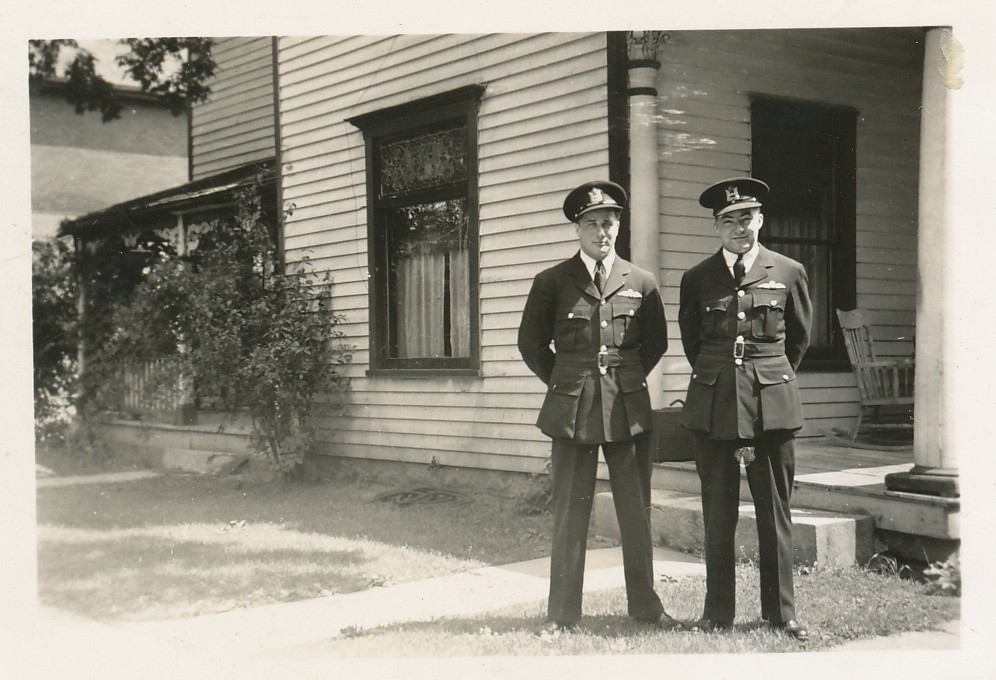
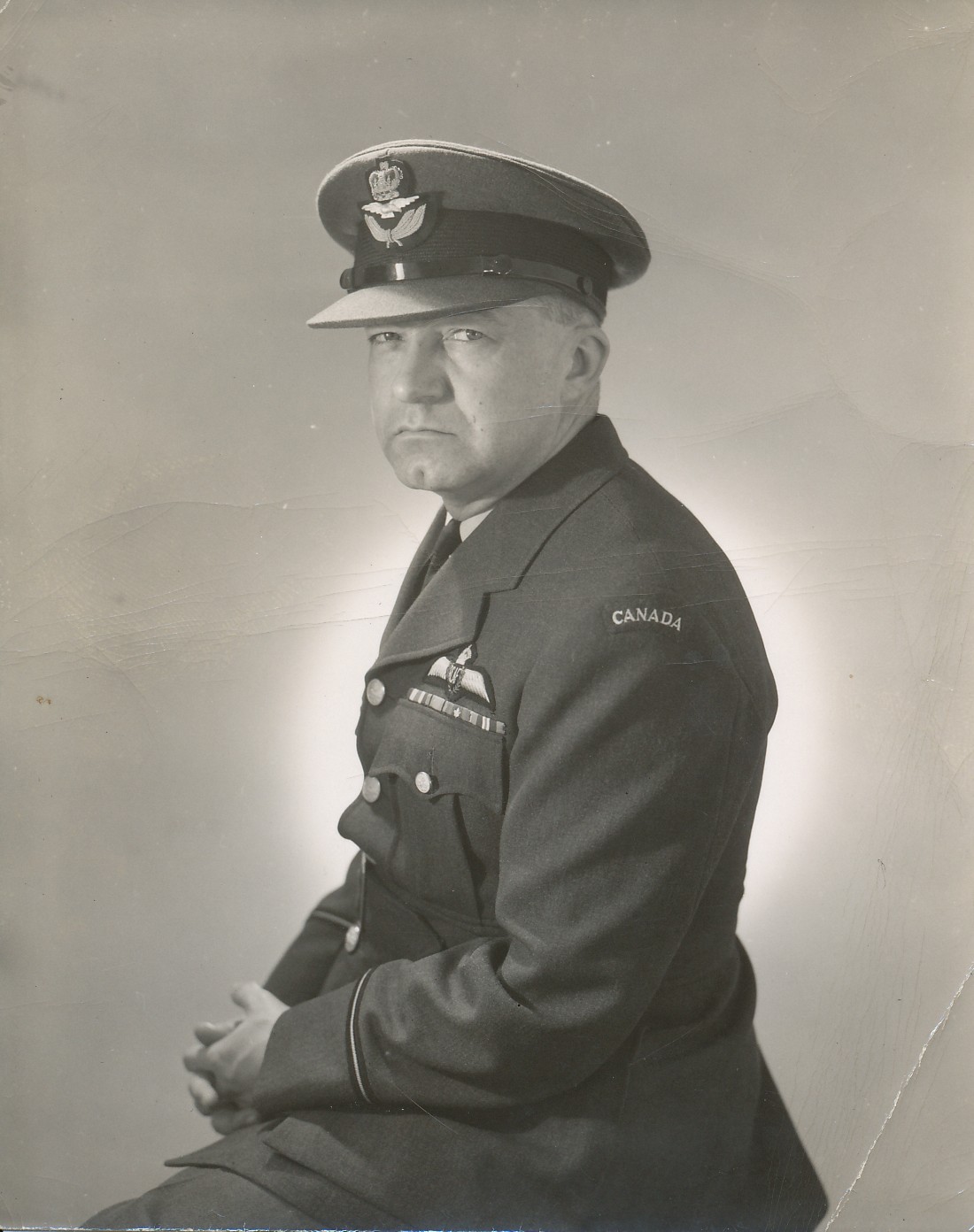
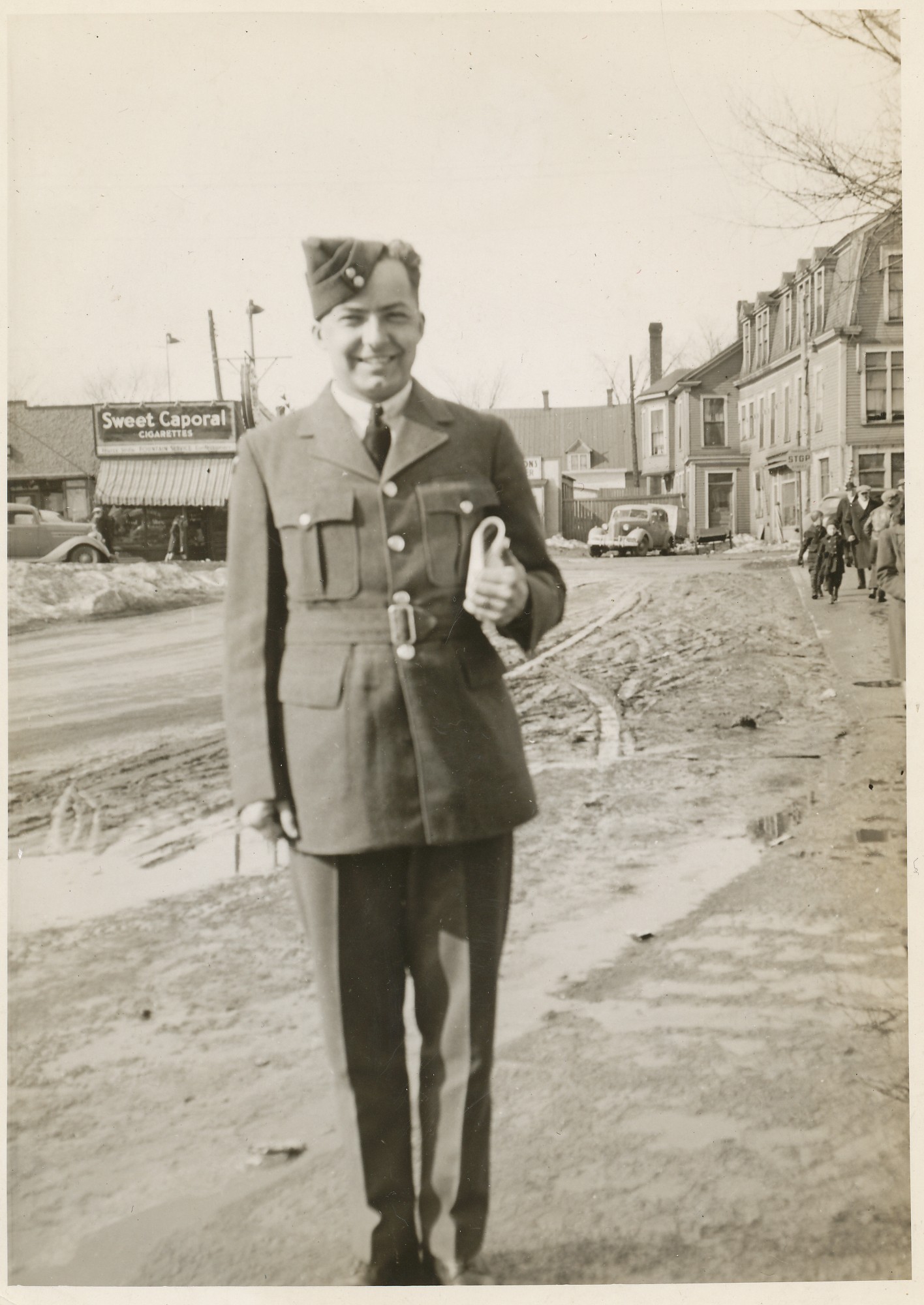
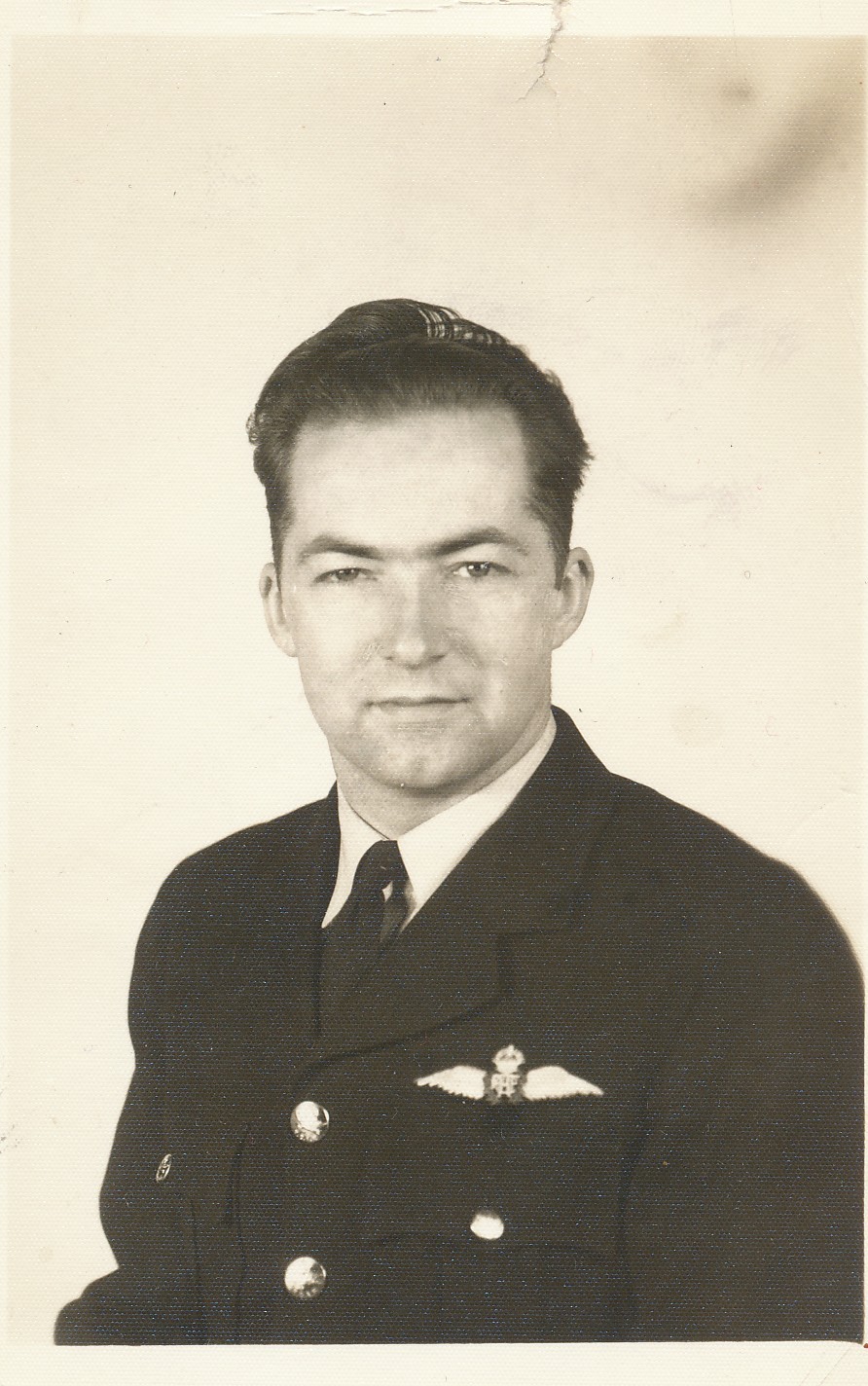
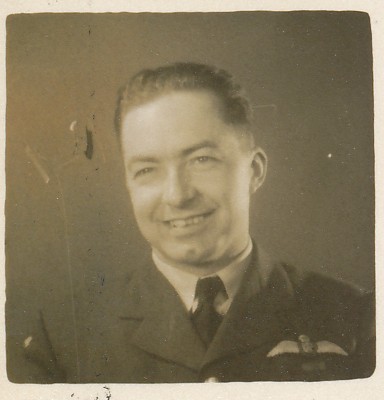
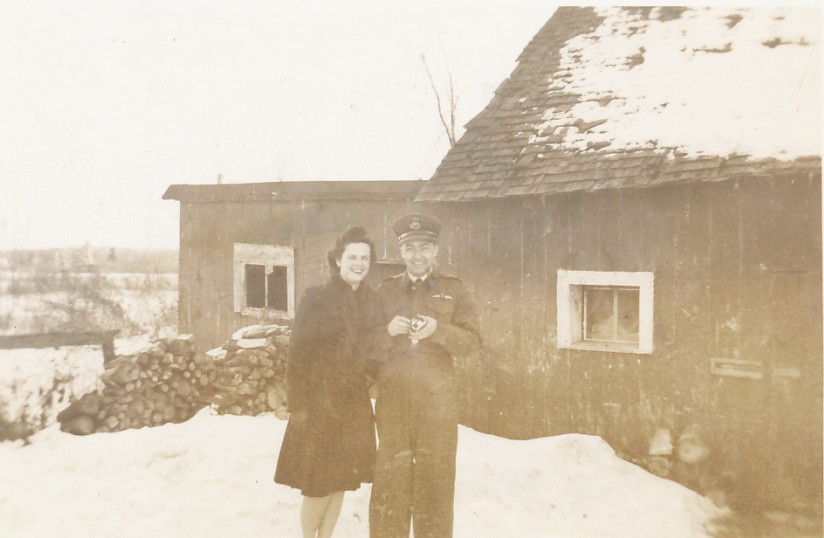
Mom and Dad were married in London, Ontario at the downtown YM-YWCA on the 26th of June 1943 – here is their marriage certificate issued in Simcoe about one month earlier:
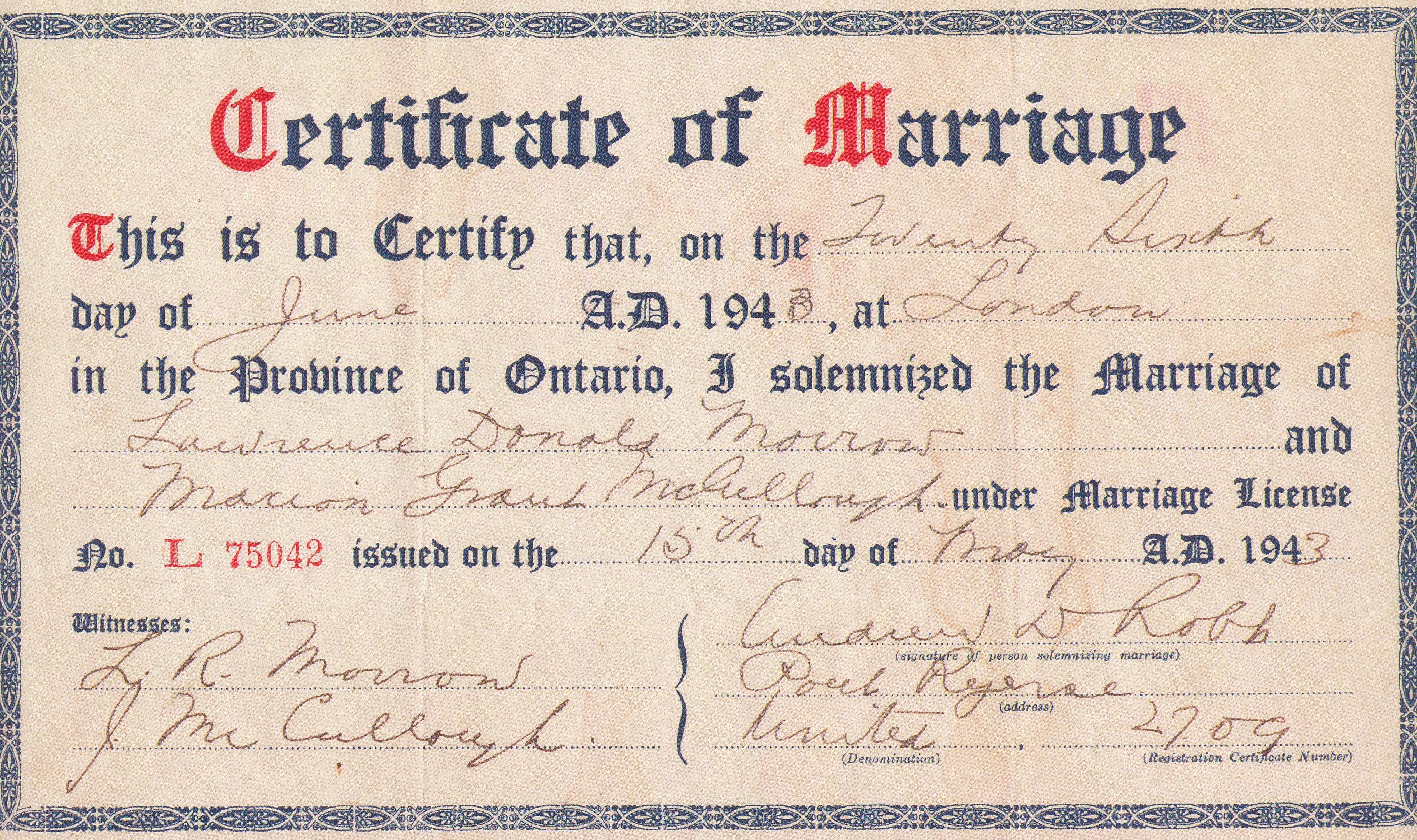
Interestingly to me, they were married in the now-defunct downtown, Wellington Street YMCA; the ‘Y’ is pictured here in 1914:
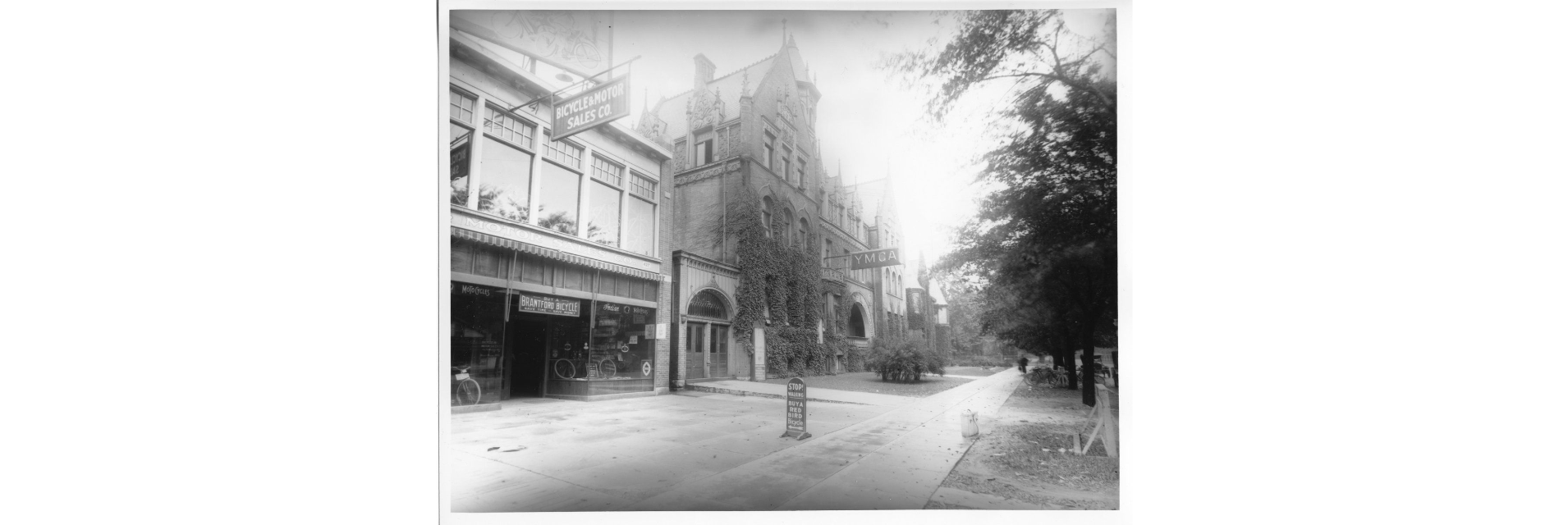
And the building front as I remember it from the 1950s:
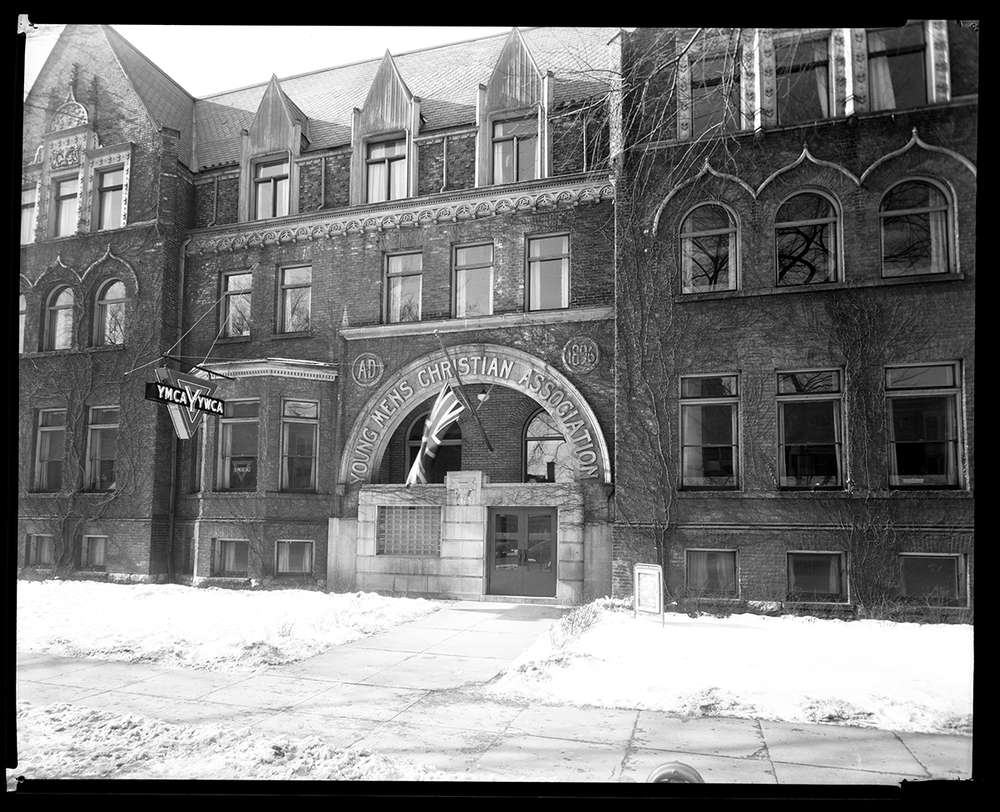
My best guess is that this family-album image of my mother is she in her wedding dress inside the ‘Y’ building:
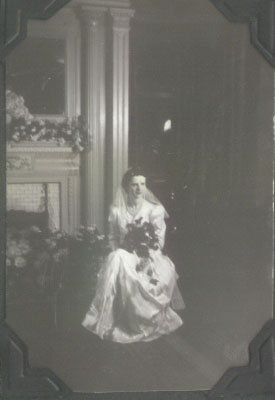
I have a framed, clearer image of the picture above and this picture holds a place of honour on our home picture shelves:
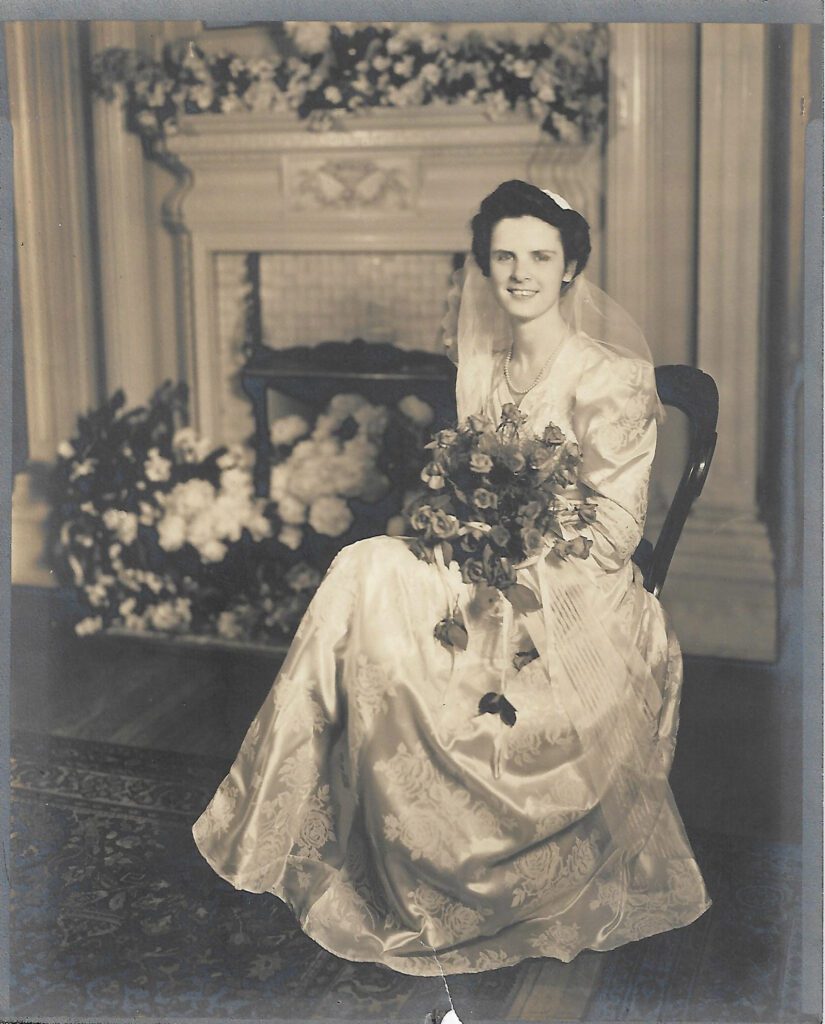
And I make up that these two bridal pictures were taken at the Y in some stately room in the facility with Mom resplendent with her 1943 eyes and smile of expectation and joy, all featured in front of a floral-decorated fireplace. Similarly, perhaps, this one of the newlyweds was taken at one of the Y entrances. My dad chose, I assume to be married in his Air Force uniform. The shyness of his visage, downward glance is not a look I remember – perhaps a camera-moment:
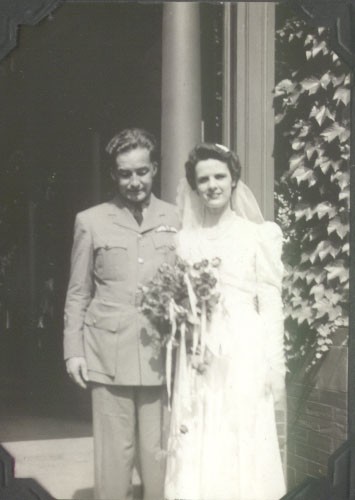
I’m not sure when I learned about their wedding venue; however, an interesting connection is that I spent many hours in that YMCA facility during the 1960s – swimming (well, more diving because I fancied myself quite a springboard diver), playing basketball, and working out on the trampoline – unaware of my parents’ wedding connection to the building. This was the facility circa the 1960s as I remember it:
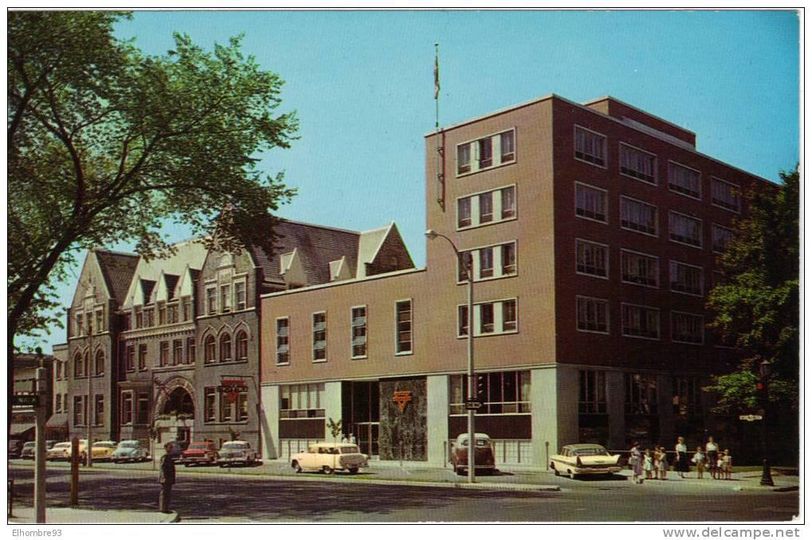
Finally, I have a distinct recollection of the fire, arson-established that ravaged the interior of the building on 4 January 1981. The next day, dozens of literally and figuratively chilling pictures were taken of the frozen architecture, rendered by fire-fighters’ water hoses. Vividly, I can recall going downtown to see the building (below); there was a magnificence about it, as though it were a crafted ice sculpture.
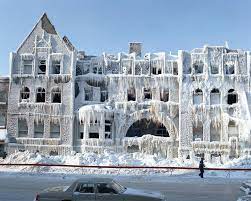
I know too that in 1981, I had just finished my first book focused, in part, on 19th century Montreal sport. My fascination in that research and project was with the sporting events and celebrations connected with snowshoeing and snowshoe clubs, ice-skating, and the world famous Montreal Winter Carnivals of the 1880s (see my Tramps’ blog here); in the latter regard, the annual ice castles were the feature of those winter festivities. I remember thinking how synchronous was the connection of those Montreal ice palaces to the London YMCA frozen architecture. 15 years later, I published a paper specifically focused on, “Frozen Festivals: Ceremony, and the Carnaval in the Montreal Winter Carnivals, 1883-1889 .” As for the London ‘Y,’ it was never restored; instead a new one was built a few blocks away. I marvel now at its meaningfulness and family significance.
Finally, a precious, to me, wedding photo of Mom and Dad flanked, respectively, by her mom and he by his mother, my maternal and paternal grandparents:
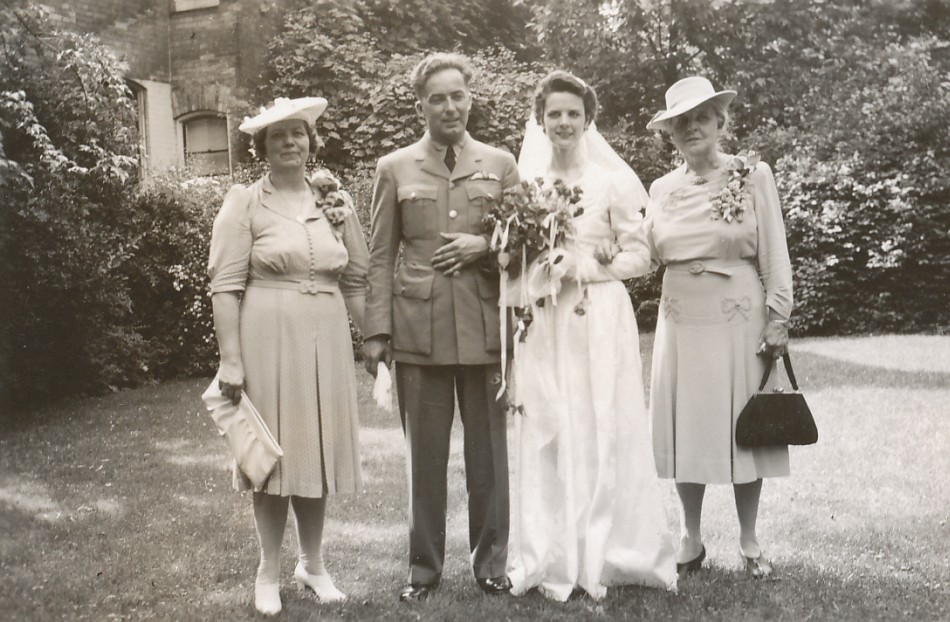
And one image of my dad, very likely taken sometime in the 1930s and I have no idea of where or when. And I tumble home to these memories, re-membering my grandfather and my father…
